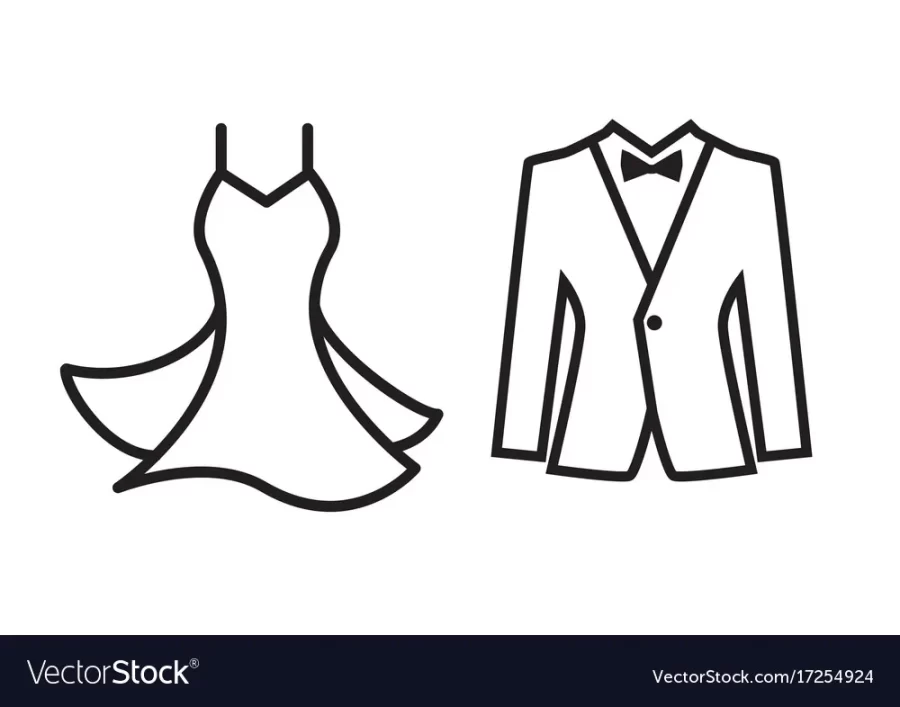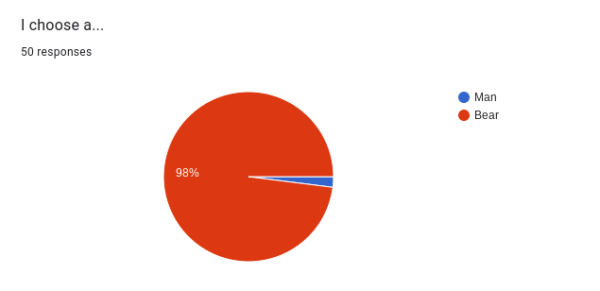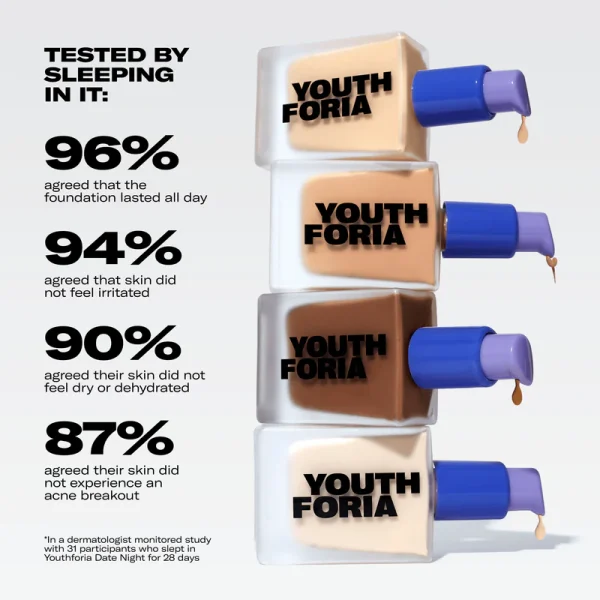The Binary Nature of Prom Attire
Gender and Cultural Identity: Blurring the Lines of Fashion
June 6, 2022
When formal dances like prom come rolling around, the question of what to wear is one that hangs over people’s heads — but it comes with limited answers. Sex and gender aren’t binary, and yet formal wear is still constricted to two boxes: male and female, suits and dresses.
State High’s junior and Senior Prom took place earlier this month. Students had a lot to say about the options they had, or lack thereof, when it came to finding what to wear. If applicable, they touched on how their gender or cultural identity affected their outfits and what they chose to don for prom.
State High senior, Jam Wright, feels as though their relationship with gender identity affects their view on clothing significantly.
“Being genderqueer has impacted my experience with expectations surrounding clothes, with both how I want to express that identity through my clothing choices and how others treat me for it. Not all of it’s been positive, but it has had impacts on both my choices, opinions, and myself,” Wright said. “Clothes really don’t make sense to be organized by gender, it really just makes sense to organize via body type more, with different tops and bottoms relating specifically to how they’d feel and look with different wearers.”
State High senior, Luly Kaye, feels similarly about how gender should relate to clothing, specifically formal attire, and the constraints of a gender binary.
“I always feel stuck because my two options are the ‘male’ option of a tux or the ‘female’ option of a fancy dress, and anything else is not formal enough. I also feel that dresses and tuxes should not be gendered because you should wear something you enjoy, regardless of if it ‘fits’ your gender. The gendered nature of formal attire also stops me from wearing a dress even though I enjoy them because I feel that I will be misgendered if I do,” said Kaye. “Getting rid of the idea that clothing is gendered and that dresses and suits are the only two options would open the doors for more creative and less gendered formal attire.”
Both Wright and Kaye feel as though people’s physical perception of them are definitely altered by what they wear. Wright wants to express herself with her clothes, even if the responses she gets aren’t always constructive. Kaye feels as though the gendered nature of formal attire is a huge restriction because they don’t wish to be misgendered due to the assumptions and preconceptions that come with certain articles of clothing. This begs the question of whether or not associating femininity and masculinity with clothes is something that’s more harmful than beneficial.
State High senior Lusha Petrunina has noticed a double standard of dresses and suits: “I think with suits there’s not much judgement — I wore a suit [to prom], I know a number of girls, guys, and nonbinary people who [also] wore suits. With dresses, I think it’s more judgemental; I haven’t seen a guy wear a dress. So that is probably stressful for people who don’t ‘look like a girl.’”
This brings up a handful of questions: Is there a heavier stigma that surrounds masculine-presenting people who wear feminine clothing? Are men who wear dresses perceived in a different way than women who wear suits? Why exactly does this double standard of who can wear feminine versus masculine clothing exist — and why are feminine-presenting people who wear masculine clothing seen as more socially “acceptable” than the other way around?
The shame that surrounds masculine people presenting themselves as feminine is one that goes hand-in-hand with misogyny. Women breaking gender roles by wearing suits or presenting themselves as masculine is often something the media celebrates and cherishes, whereas men who do the same by portraying themselves with feminine traits are often demeaned. Breaking gender roles is not easy — anyone who breaks the binaries that femininity and masculinity have been put into can face varying levels of opposition and violence. However, it is important to recognize one’s own biases and where they might have stemmed from, especially if they start to shine through your words and actions.
As mentioned before, the idea that humans are either male or female is deeply ingrained in Western culture. People in other cultures have worn more or less the same garments, regardless of gender, for centuries. The Japanese kimono replaced two-piece outfits of shirts and trousers starting in the Heian period, (the last division of classical Japanese history, lasting from 794 to 1185), and both Japanese men and women wore kimonos belted at the waist with an obi or sash. The sarong/sarung, a large length of fabric often wrapped around the waist, is worn by those who live in Southeast Asia, South Asia, Western Asia, Northern, East, and West Africa, and on many Pacific islands, regardless of gender.
The Arabian peninsula and the Horn of Africa have a ubiquitous fabric wrap that is worn by any gender. In Ancient Greece, the standard attire for men and women typically consisted of two pieces of clothing worn draped around the body: a tunic (either a chiton or a peplos) and a cloak called himation.
In fact, the skirt was never a strictly feminine garment originally. It had been a part of the male outfit in both Medieval and Renaissance Europe. In 16th and 17th century Europe, the standard attire for noblemen included hoses, codpieces, and skirt-like voluminous puffy breeches. This rang true up until the 19th century, when a pivotal moment for the West began: Industrialization. With industrialization came much more clearly-defined gender roles, and therefore, the assignment of gender/sex with clothing. What’s stopping us from blurring the lines between those assigned gender roles again?
“The worst thing a system can do is force something as simple, yet valuable, as clothing options on people,” said Wright. “This applies to both queer communities, people, and those from different cultural or traditional styles. I’ve seen and known places that did this and it feels very designed to both control and segregate people, which is something the United States has had a very bad history of. I am pleased that so far I haven’t seen too much of this in the school, and mainly just from other students. Not to say it still doesn’t happen, but it’s improved more than many other places.”
Kaye’s prom outfit made them feel connected to their family and culture, but the gendered aspect of clothing still confined them.
“I feel very happy with my [prom] outfit because I was able to piece it together from things in my house and I really enjoy wearing things from my mother and grandmother, (earrings, shoes, shirts, etc…) because it makes me feel connected to them. If I had found a dress from my family members that I really wanted to wear, I likely would not have because of the gendered nature of dresses,” said Kaye. “That makes me frustrated because I should be able to wear what I want without worrying about how I am perceived. What I wear to formal events or otherwise should not define me as feminine or masculine. As with formal attire like dresses, I often choose to dress in a less ‘feminine’ way in order to be gendered correctly. I think I change how I dress and do not fit into a stereotypical gendered box. In elementary school, I wore dresses, along with other clothes, but as soon as I reached middle school I stopped because I became conscious of gender and how people perceive me in a dress.”
The push for genderless attire isn’t to erase gender from clothing, but to eradicate the stigmas, rules, and double standards which dictate what people “should” or “shouldn’t” wear. Assigning sex to a type of clothing seems even more arbitrary when you consider the experiences of those who present as gender-nonconforming and/or identify under the trans umbrella, as well as the fact that one in 100 people are born with some form of intersex anatomy. Western culture especially emphasizes the gender binary of clothing, although the boundaries between gender and attire is blurred in many other cultures.
Clothing is supposed to be reflective of the person wearing it. So why are there limited options and set restrictions in the first place? Shouldn’t people be free to wear what they want without the fear of being judged, misgendered, or











